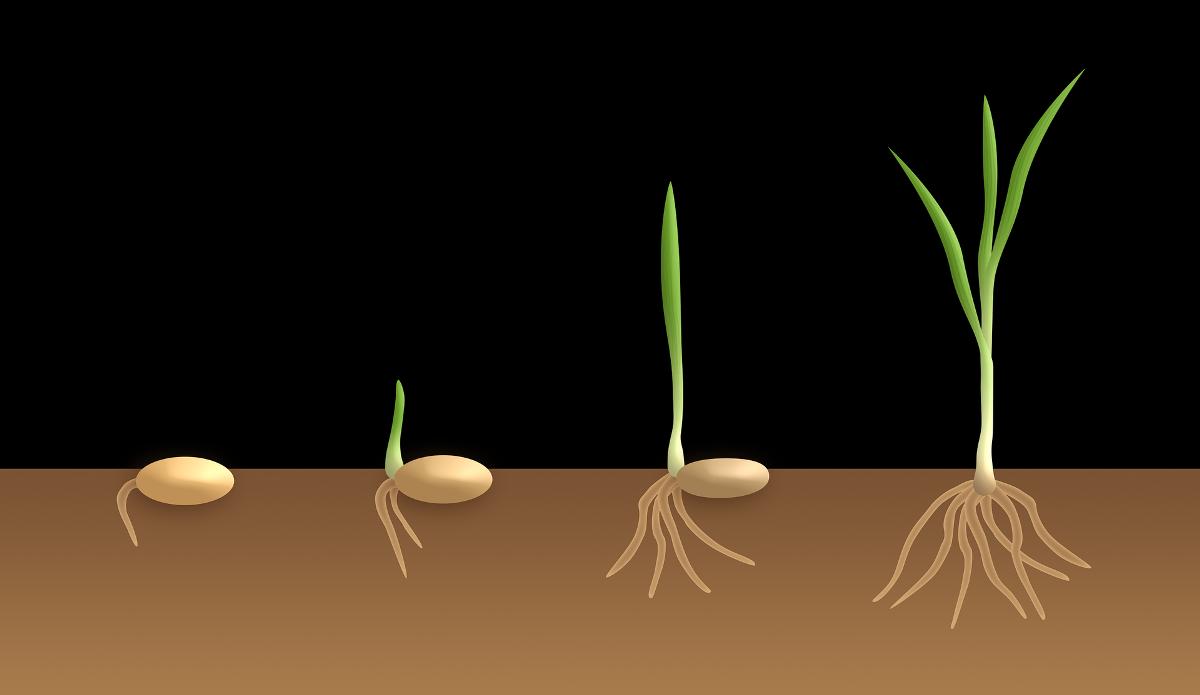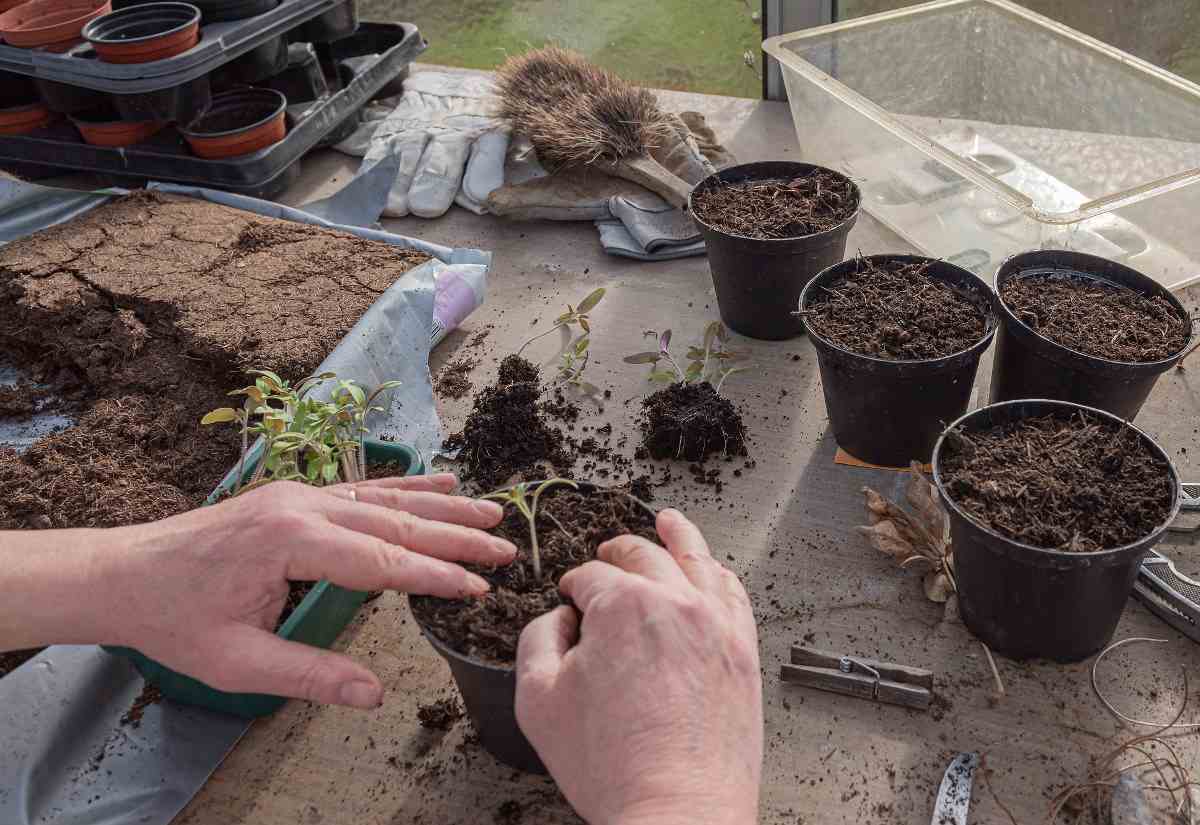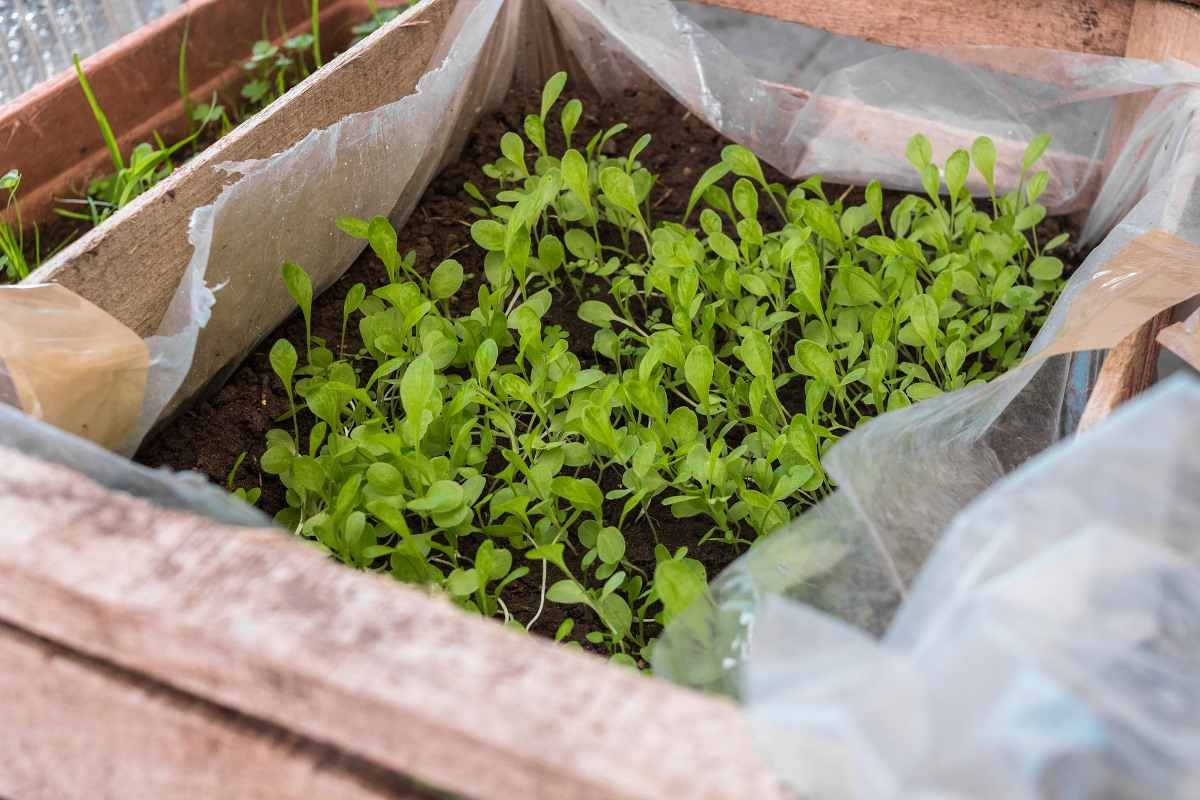Introduction to Growing Plants from Seed
Growing plants from seed is a great method to start gardening earlier in the season. With the right light, growing conditions, and some simple equipment, it’s easy to grow from seed to harvest. You want to grow plants from seeds easy and save money. Several plants such as vegetables, annuals, and herbs, can be grown from seed. In this article we also covered the following topics;
- Easiest indoor plants to grow from seed
- Step by step process for growing plants from seeds
- Houseplants that grow from seed
- When should you start growing plants from seed
- Do seeds need sunlight to germinate
- Is it easy to grow indoor plants from seeds
A Step By Step Process to Growing Plants from Seed
Select Your Seeds for Growing Plants
In general, the easiest plants to grow from seed are those with large seeds like peas, beans, corn, squash, melon, and cucumbers. Many plants that grow from small seeds such as most greens, tomatoes, peppers, eggplants, broccoli, cauliflower, and Brussels sprouts, are more difficult. Some flower seeds like poppies, zinnias, nasturtiums, marigolds, and petunias are also wonderful options for novice gardeners.
The easiest indoor plants to grow from seed include Cat grass, Palms, Cactus, Peace lily, African violet, English ivy, Rubber tree, Asparagus fern, and Coleus, Succulents, including Aloe Vera, living stones and Sansevieria
Find the Right Containers for Growing Plants from Seed
You can start seeds in almost any type of container, as long as it’s at least 2 to 3 inches deep and has some drainage holes. Seed-starting containers must be clean, measure at least 2-3 inches deep, and have drainage holes. They can be plastic pots, cell packs, plastic flats, peat pots, even eggshells. Also, you can buy seed-starting kits, but don’t invest a lot of money until you’re sure you’ll be starting seeds every year.
Tips for Growing Plants from Seed

- A local garden store can recommend seeds that are very easy to grow in your climate and at this time of year. Great beginner options for vegetable plants and herbs include green beans, loose-leaf lettuce, and basil.
- Planting seeds in pots can be a great way to start a houseplant, or otherwise start seeds that you may later transplant into the garden. Starting seeds in pots does not need to be difficult, but it does require some planning and attention to ensure the successful propagation of the new plant.
- Fresh plant seeds are more likely to germinate than old ones. Collecting your seeds from plants is risky, but can be a fun experiment.
- Seeds require warm, humid, and well-lit space for the best germination process. They sprout best at temperature levels between 18 to 24°C. Seeds grow in two stages that are germination and growing stages. Germination of seed is the sprouting stage when the embryo emerges from the seed. It doesn’t need light at this stage but will need some gentle warmth (not harsh heat). Place the seed-containers on top of a refrigerator, dryer, or special heating-mats.
- You won’t need light at this phase because it occurs under the soil, but you will need gentle warmth (not harsh heat). You can provide heat by using special heat mats to fit your seed starting needs.
- Once you see green sprouts about half an inch tall, then you need the plant lights. You can remove the heat mats as long as the room temperature is between 60 and 70F. Insufficient light can affect in leggy and scrambling seedlings. If a home or garden lacks natural sunlight, artificial lights would work just as well. Select fluorescent lights instead of incandescent bulbs as the heat from the bulb could cause the plants to die. Place the fluorescent lights 3 to 4 inches away from the plant and watch them grow.
- Take care to sprinkle water gently over the seeds with hands or through a spray-bottle. At this stage, the plant roots are very weak and a strong gush of water can cause it to uproot. Transplant the seedlings outside after 4 weeks or when they are about 6 inches tall.
Prepare the Potting Soil for Growing Plants from Seed

- Sow seeds in the sterile, seed-starting mix or potting soil available in nursery centers and garden centers. Don’t use garden soil for plants, it’s too heavy, contains weeds seeds, and possibly, disease organisms. Wet the soil with warm water before filling seed-starting containers or pots.
- Choose potting soil that’s made for growing seedlings and do not use soil from your garden or re-use potting soil from houseplants. Start with a fresh, sterile mix that will ensure healthy and disease-free seedlings.
- Before filling your containers or pots, use a bucket or tub to moisten the planting mix. The main goal is to get it moist but not sopping wet; crumbly, not gloppy. Fill the containers and then pack the soil firmly to eliminate gaps.
- Remember that soil mixes contain few nutrients, so you’ll need to feed the seedlings with liquid fertilizer a few weeks after they germinate, and then continue until you transplant them into the garden.
Conditions Required for Growing Plants from Seed
Some easy steps to grow plants from seed;
- Collect or buy seeds.
- Find some trays or pots.
- Fill the seed trays or pots with seed compost (seed starting potting mix).
- Moisten the surface of the compost.
- Sprinkle the seeds evenly over the compost.
- Cover the seed tray to keep it dark and moist and then place the seed tray in a warm place.
- Uncover the seedlings once they germinate (sprout).
- Transplant the seedlings into individual pots to give them room.
- Keep transplanted seedlings in the shade.
- Plant them out into the ground and then enjoy.
Plant at the proper depth – First, you’ll find the proper planting depth on the seed packet. Then, cover seeds with soil equal to three times their thickness but be sure to read the seed packet planting instructions carefully. Some seeds like lettuces and snapdragons need light to germinate and should rest on the soil surface but still be in good contact with moist soil. Gentle tamping after seed sowing will help. After planting seeds, use a spray bottle to wet the soil again.
Water wisely – Always use room-temperature water and chlorinated water sit overnight so the chlorine can dissipate or also use distilled water. Avoid using softened water. It is important to keep the soil consistently moist, but avoid overwatering, which promotes diseases that can kill seedlings. Try not to splash water on plant leaves. An easy way to avoid this as well as overwatering is to dip the base of containers in water and then allow the soil to absorb moisture from the bottom of the container. Seed-starting kits supply a wicking mat that conducts water from a reservoir to dry potting soil. This may be the most goof-proof process of watering seedlings but you still have to be careful that the soil doesn’t stay too wet. Whatever you do, don’t miss a watering and let seeds dry out.
Maintain consistent moisture – Before germination, cover container to help trap moisture inside. Seed-starting kits typically come with a plastic cover. Also, you can use a plastic bag, but it should be supported so it doesn’t lay flat on the soil. Remove covers as soon as seeds sprout. Once seedlings are growing, reduce watering so soil partially dry, but don’t let them wilt.
Fertilize – Start feeding seedlings after they develop their second set of true leaves, applying a half-strength liquid fertilizer weekly. Then, apply it gently so seedlings are not dislodged from the soil. After 4 weeks, apply full-strength liquid fertilizer every other week until transplanting.
Circulate the air – Circulating air helps prevents disease and encourages the growth of strong stems. Then, to create air movement keep the fan a distance away from the seedlings to avoid blasting them directly.
How Much Water Do Seeds Need?
Water is essential for plant development, overwatering is the common cause of seedling failure. Water is important to starts the seed germination process. Water is one of the vital elements when starting plants from seed and also important in the seed germination process. Too much water results in seeds that will drown or rot. Too little and they will fail to germinate or die once they do.
Sow your seeds in an evenly pre-moistened mix and it should be moist but not soaking wet. Cover the container to hold in humidity while they germinate seeds with the cover from your kit, or a clear plastic wrap. Seed starting kit lids are designed to fit loosely on the top of the try to ensure air circulation. Once they sprout, water them from the bottom by pouring water into the tray. Then, make sure air circulates freely so humidity isn’t trapped around plants.
How to Sow Seeds in Easy Steps
You can sow seeds in a proper seed tray bought from a garden store. Otherwise, you can make do with a cookie tin, flower pot, empty food container, or something like that. If there are no holes in the container bottom, make some with a 1/4 inch drill bit or a nail. Space the holes a few inches apart. Then, this allows water to drain from the container and prevents it from collecting, which would make the seed compost overly wet. You can sow seeds individually in plant trays like the ones annual plants from stores are sold in. The advantage of these is that seedlings don’t require to be transplanted later.
Conditions Necessary for Seed Germination
Below are some requirements which are important for a seed to germinate into a seedling and to a plant.
Water – It is necessary for the germination of seeds. Some seeds are dry and need to take a considerable amount of water. Water plays an important role in the seed germination process.
Oxygen – It is an important source of energy required for seed growth.
Temperature – For a seed to germinate, it requires a moderate temperature level of around 25-30°C. Different seeds require different optimum temperatures. Some seeds require special requirements either lower or higher temperature levels between 5 to 40°C.
Light – Seed responses to light can control the timing of germination in the field. Once your seeds have sprouted, the room temperature level is ideal. The most important thing to consider is adequate plant light. Seedlings need more light than full-grown plants, ideally as much as 16 to 18 hours a day.
How to Germinate Seeds
The seed germination process influences both crop yield and quality. To germinate seeds you will want to give them the correct type of soil.
Some seeds need to germinate indoors several weeks before the weather gets warm, while other seeds need only a few days. Seeds need to germinate in a growing medium that’s different from standard potting soil or dirt. They need a certain soil texture to germinate, and it’s different for different seeds.
During the seed germination beginning stage, the seeds take up water rapidly and this results in swelling and softening of the seed coat at an optimum temperature level. This phase is referred to as an Imbibition and it starts the growth process by activation of enzymes. The seed activates its internal physiology and starts to respire and then produce proteins and metabolizes the stored food. This is a lag phase of the seed germination process.
By rupturing the seed coat, a radicle emerges to form a primary root and then the seed starts absorbing water. After the emerging of the radicle, the shoot starts growing upwards. In the final stage, the cell of the seeds become metabolically active, elongate, and divide to give rise to the seedling.
Paper Towel Germination Process
Paper towels, filter paper, or newspaper provides a good medium for germinating seeds. They are pathogen-free and make it easy to control the moisture content for the proper seed germination process.
Process of Paper-Towel-Germination method;
- For paper towel germination, tear a paper towel in half and moisten one of the halves.
- Then, place 4 or 5 seeds on half of the paper and fold the other half.
- Place the paper with seeds inside and then reseal the bag.
- Set the bag anywhere out of direct sunlight that stays at room temperature level. You can observe seeds sprouting in about 5 to 7 days.
- The drawback to the paper towel germination method is that the delicate, sprouted seeds must be transplanted manually to soil or another moisture-holding medium like vermiculite. After that, the seedlings ready for outdoor planting.
You may also check this: How To Grow Plants In Water.
Some Tips to Growing Plants in the Soil from Seed
1. First, use a seed starting tray that contains drainage holes.
2. Fill the tray with damp and lightweight seed starting mix.
3. Sprinkle plant seed on the top of the seed starting mix. Then, cover with a fine layer of more seed starting mix.
4. Spray the top of the soil with a fine mist of water to dampen the soil.
5. Cover the seed starting tray to keep in moisture and hasten seed germination.
6. Then, keep the soil moist but not soggy while the seeds germinate.
Once the seedlings emerge, place the seed starting tray in a place with bright light. For the houseplant seedlings, they require good lighting to thrive. You could need to provide them with supplemental LED or full-spectrum lighting. Keep young houseplants moist at all times.
Common Mistakes Made While Growing Seeds Indoors
Not Supplying Enough Light – Seedlings need a lot of light to grow into sturdy and healthy plants. When seedlings first appear, keep the lights turned on for about 12 to 16 hours per day.
Applying Too Much or Too Little Water – The quantity of water you supply can make or break seedling growth. Watering is one of the challenging aspects of seed starting. You should keep the sterile seed-starting medium damp but not wet.
Planting Seeds Too Deeply – Some seeds need complete darkness to germinate and other seeds require light to germinate. Proper planting depth is provided on the seed packet. If there is no information on the packet, the rule of thumb is to plant seeds 2 to 3 times as deep as they are wide. For seeds that need light to germinate, and make sure the seeds are in contact with the seed starting medium but are not covered. To do this, gently press the soil medium to make a firm surface.
Commonly asked questions about growing plants from seed
- Broccoli Seed Germination and Selection
- Asparagus Seed Germination and Variety Selection
- Seasonal Flower Gardening: Best Practices for Spring, Summer, Fall, and Winter
- How to Grow Hibiscus from Flower
- Plantation Ideas for Home Decoration: A Beginners Guide
- Flower Garden Designs and Layouts for Beginners

What is the fastest growing plant from seed?
Some of the fastest-growing plants from seeds are vegetables like peas, beans, and especially radishes. If you do this, you should see growth in as little as 6 days, sometimes eight days.
Is it helpful to soak seeds before planting them?
The seed-growing process can be triggered by soaking seeds. You should soak the seeds for 24 hours. You can’t use too much water, as you can accidentally drown your seeds. Then they won’t grow.
How deeply do I plant the seeds?
Most seed packets in stores tell you how deep to plant. A rule of thumb is to sow seeds 2 or 3 times as deep as they are wide. Take care not to plant seeds too deep and seed contains a limited supply of stored food to nourish it during germination. Some seeds require light to germinate and the seed packet should say this.
Where/how to store seeds for flowers and vegetables?
Seeds retain their viability when stored at cool temperature levels, lower humidity, and reduced light exposure. Begin by harvesting high-quality seeds from healthy produce. Next, be sure to thoroughly dry the seeds, and then seal them in an airtight container. A jar or zippered plastic bag works well. Then, place the sealed container in the refrigerator or freeze them for storage. Be sure to label the seeds to avoid mix-ups in the spring season. It’s advisable to use seeds as soon as possible for the quickest seed germination rate.
In case if you are interested in this: How To Start Seed Production Business.